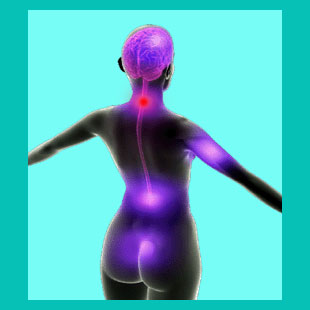
Cervical herniated disc exercises are some of the most popular and widely utilized of the many conservative care options used to treat chronic disc pain in the neck. Exercises can be performed alone, but most patients are prescribed fitness-based treatment activities as part of a physical therapy program. Exercise therapy will never cure a herniation in the cervical spine. However, many patients find that they do enjoy symptomatic relief after performing certain varieties of exercise or stretching.
This dialog examines the role of neck exercises in treating intervertebral herniations in the cervical spine. We will document the limitations of exercise therapy for resolving disc abnormalities, as well as extol the virtues of exercise as part of a combined care program for chronic neck pain.
Types of Cervical Herniated Disc Exercises
There are many types of exercises used to treat herniated discs in the neck. Physical therapy is the most commonly prescribed exercise application, with patients being referred for treatment for many different reasons. Some patients will use PT to overcome acute episodes of pain. Others will be placed in long-lasting programs as a form of ongoing constructive pain management.
The worst use for PT is simply to gain prerequisite insurance coverage for a surgical undertaking. Many health plan companies require a specified number of PT sessions before they will pay for a surgical endeavor. This is often a waste of time for the patient, since they would usually rather move ahead with a curative procedure if disc surgery is truly warranted in their particular circumstances.
Many patients utilize a plethora of other self-managed modalities instead of, or in addition to, physical therapy. The most common of these fitness activities are yoga, tai chi, Pilates, walking and swimming. Some patients add specialized stretching techniques to their exercise routine for additional positive effect.
Herniated Disc Exercises Facts
Many doctors and patients alike question the purpose of exercise therapy recommendations for a cervical disc pathology. After all, the logic of the prescription seems quite unsound, since exercise will never heal a damaged disc that is bulging into the spinal cord or compressing a spinal nerve. Cervical herniated disc exercises will certainly never repair a ruptured disc that is chemically irritating surrounding neurological fibers.
Given the limits of exercise therapy, one would expect it to be universally ineffective and even painful for most properly diagnosed patients. However, this is simply not true. This clinical fact leads us to a logical summary conclusion: Most herniations are mistakenly identified as the real source of pain. This is a truth supported by widespread and virtually universally-accepted medical research.
The reason why exercise works well to relieve many different neck pain concerns is not because it creates some miraculous cure. No, exercise works because the cause of the pain has been misdiagnosed in most cases. If the herniated disc was actually the source of symptoms, exercise should aggravate the condition, or at least do nothing to help, proving once more that herniations are mostly coincidental to any neck pain that is experienced.
Treatment providers know these facts. They understand that exercise will not cure intervertebral disc pathologies. They continue to make the recommendation for physical therapy to patients however, since statistics show that exercise is usually beneficial.
Doctors have missed the crucial point, in that they should re-evaluate patients who respond well to exercise treatment, since the herniation is unlikely to have changed, while the symptoms have obviously improved. This fact points to a potentially glaring error in the diagnostic accuracy.
Cervical Herniated Disc Exercise Evaluation
We are certainly advocates for the use of exercise for maintaining good health, but rarely recommend any form of exercise as a specific herniated disc treatment. Although exercise will not hurt, it will not enact a permanent cure. The only real use of exercise for true disc-enacted pain syndromes is to help confirm or deny to correctness of the diagnostic conclusion.
If exercise brings substantial relief, there is a good chance that the diagnosis may be faulty. If exercise does nothing, then the diagnosis may or may not be reasonable. If exercise exacerbates the expression of disc pain, then the chances of the diagnosis being correct increase to some degree.
For patients who see no benefit from cervical herniated disc exercises, there is a better chance that the implicated disc, or some other structural anatomical issue, may be responsible for causing the pain. However, this is not always the case. Many patients with a psychosomatic ischemia syndrome develop a significant physicophobia and are actually deathly afraid of exercise. In these cases, the patients must not only use knowledge therapy to cure their pain, but also to overcome the nocebo influence of their fitness fears and illogically conditioned responses.
To learn more about the benefits of cervical disc treatment using exercise, talk to your physician or your physical therapist. Just be careful to separate fact from fiction when understanding the true benefits that exercise can enact on an accurately diagnosed and pathological herniated disc in the neck.
Herniated Disc > Herniated Disc in the Neck > Cervical Herniated Disc Exercises





